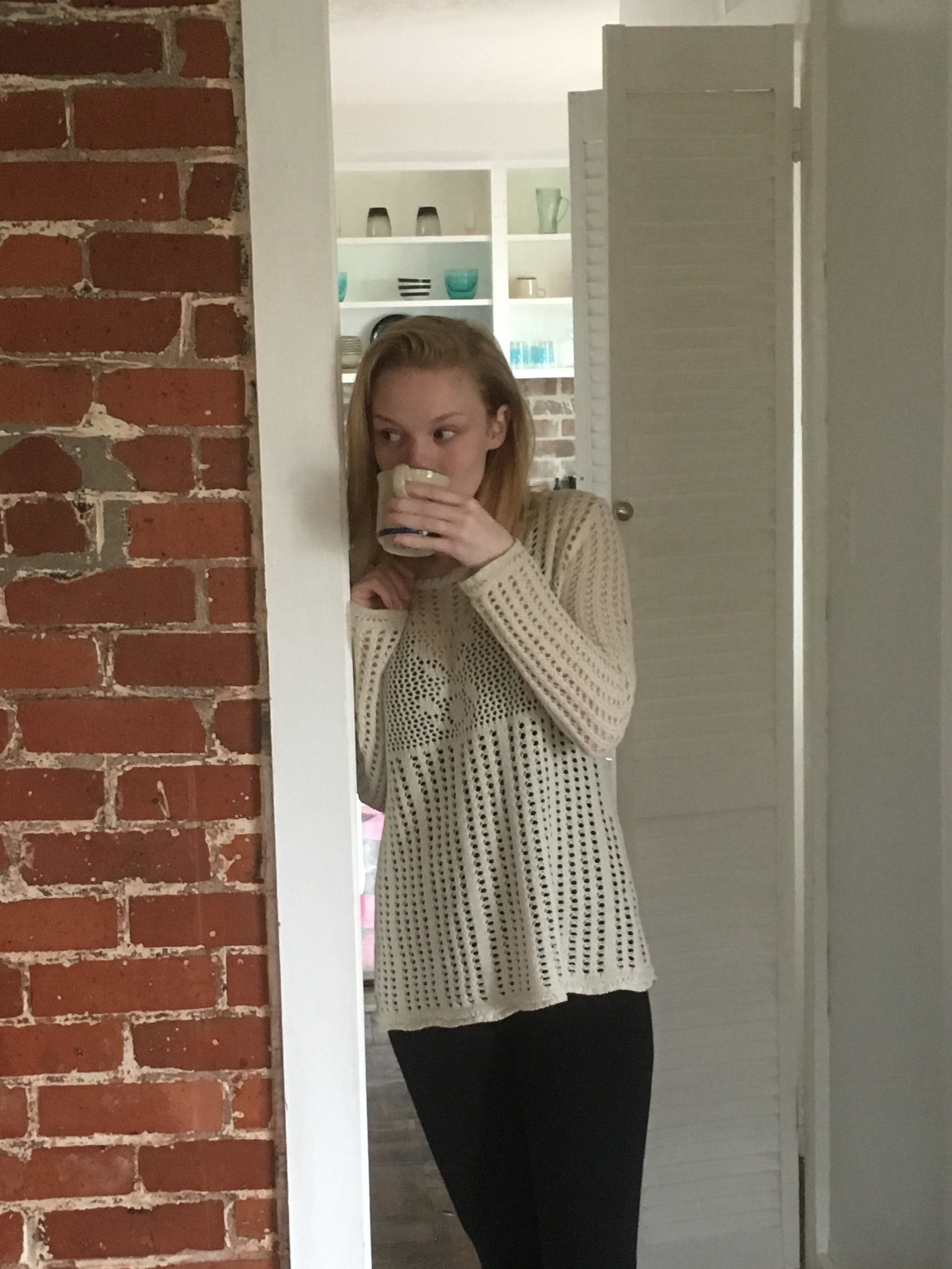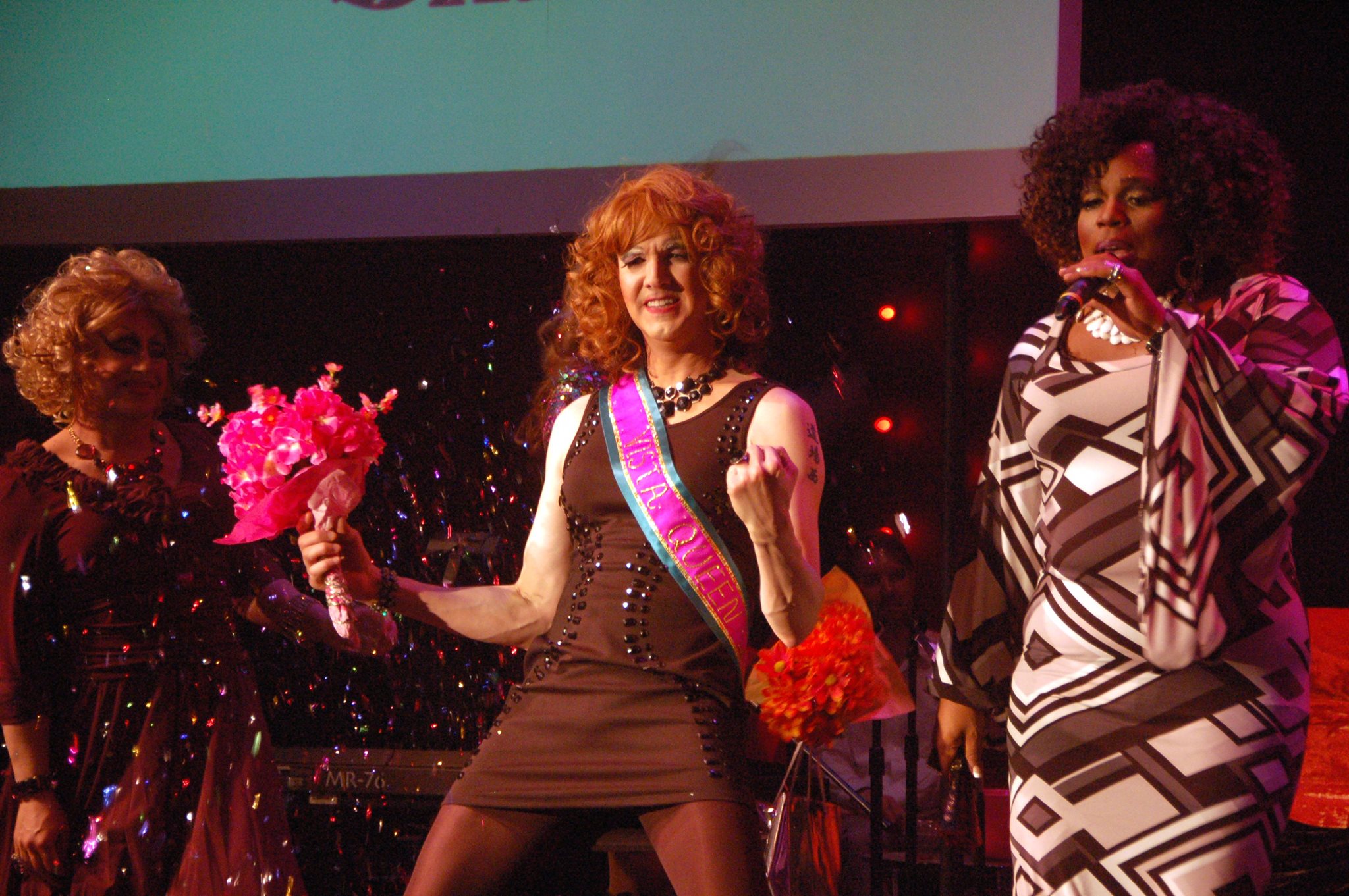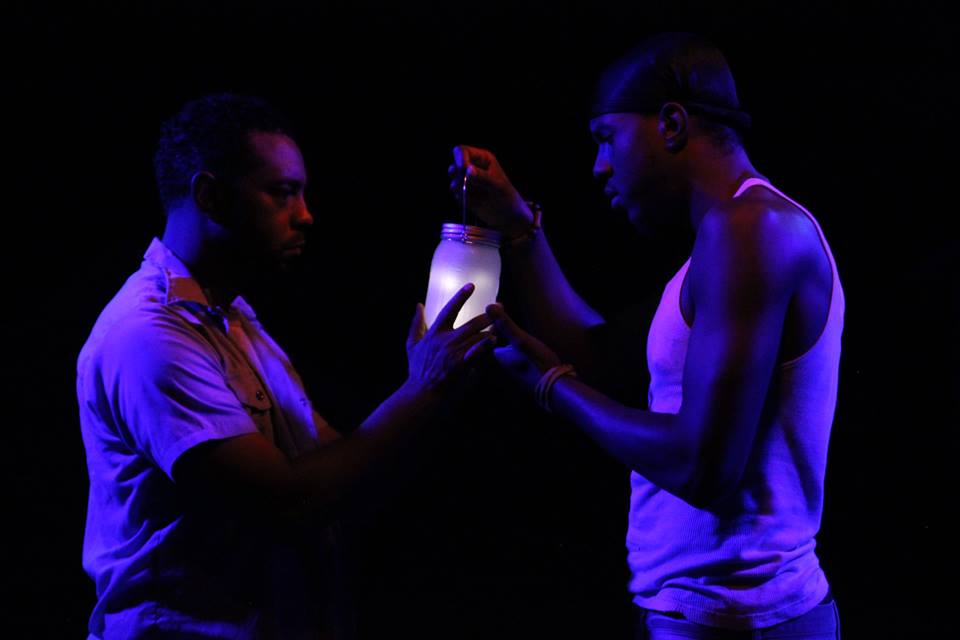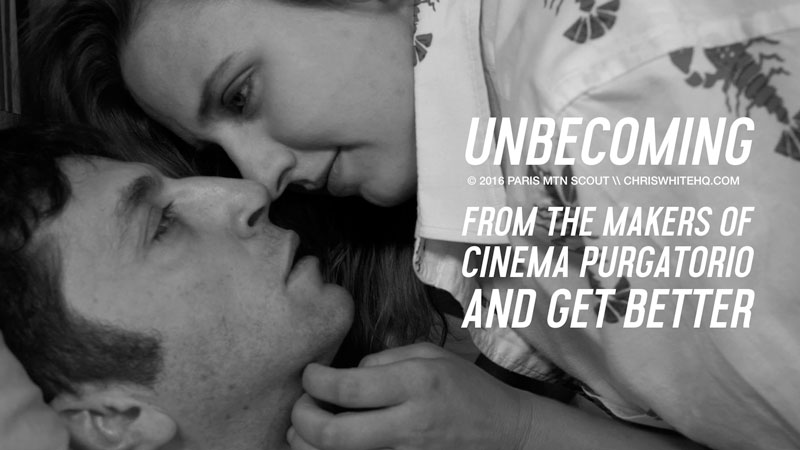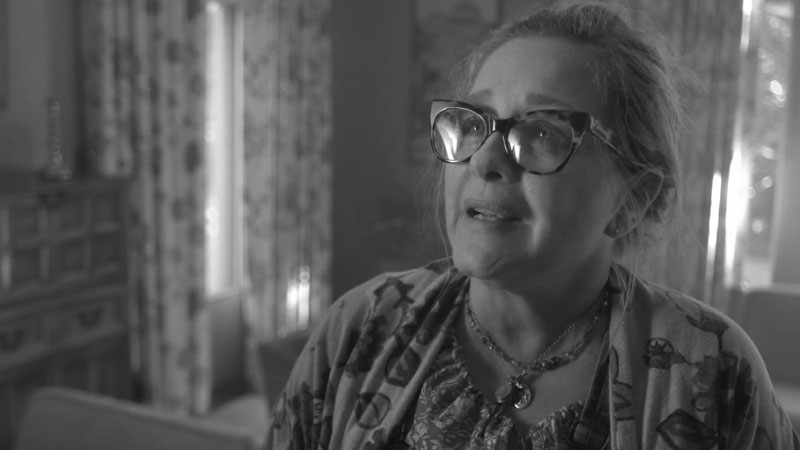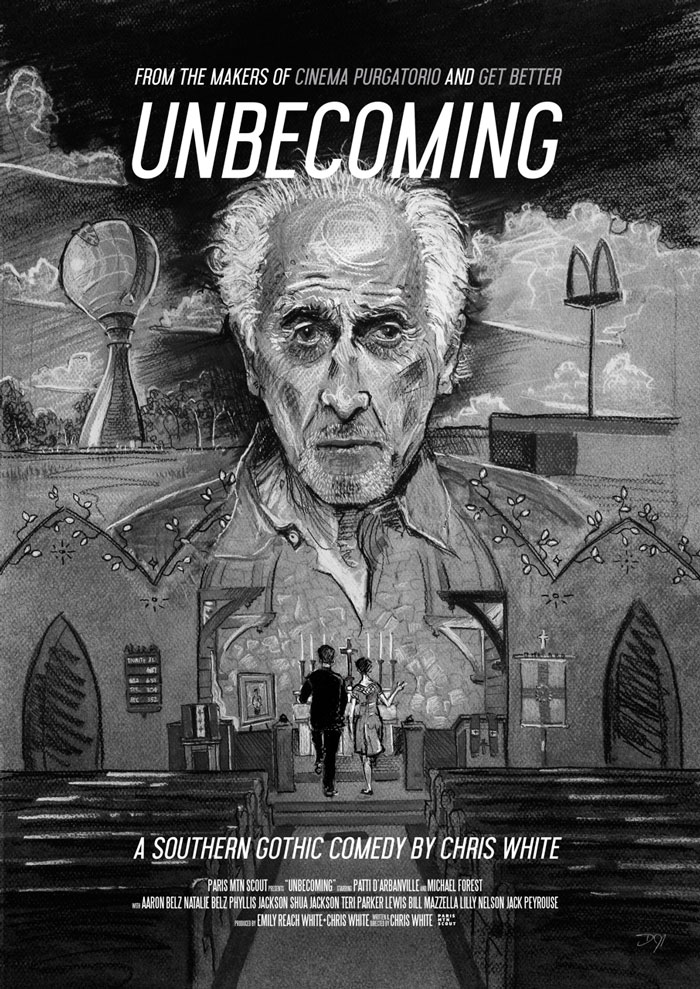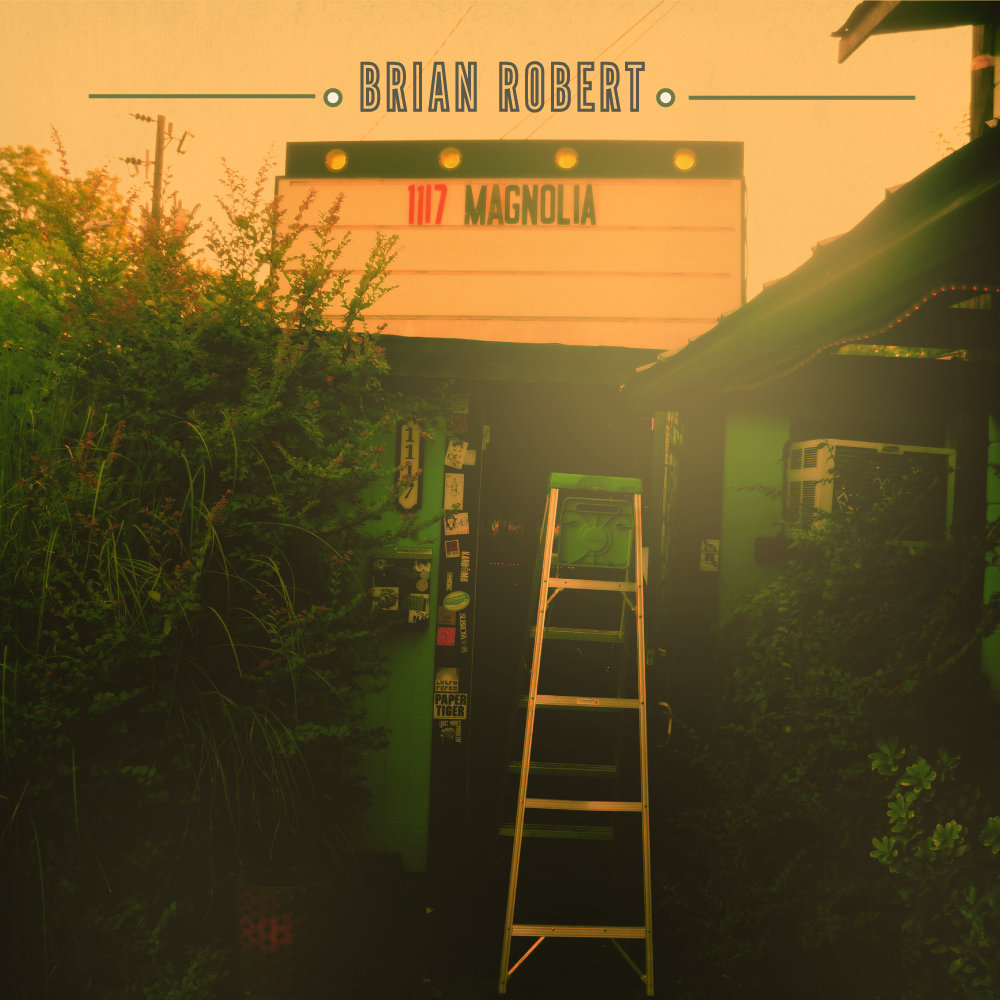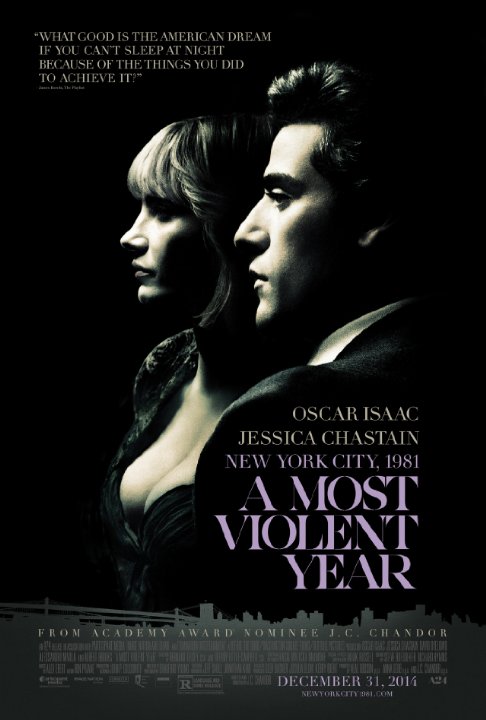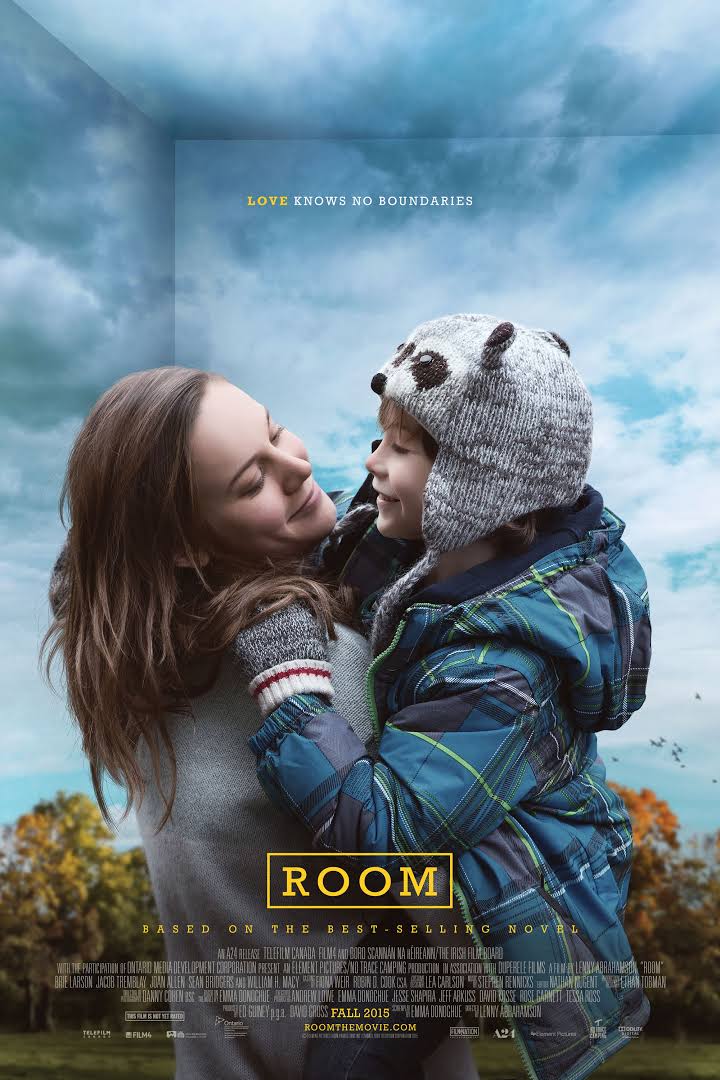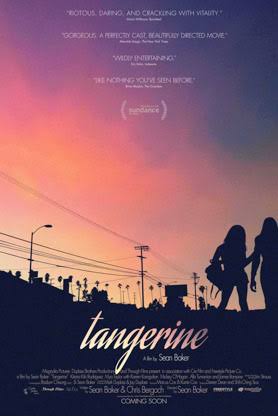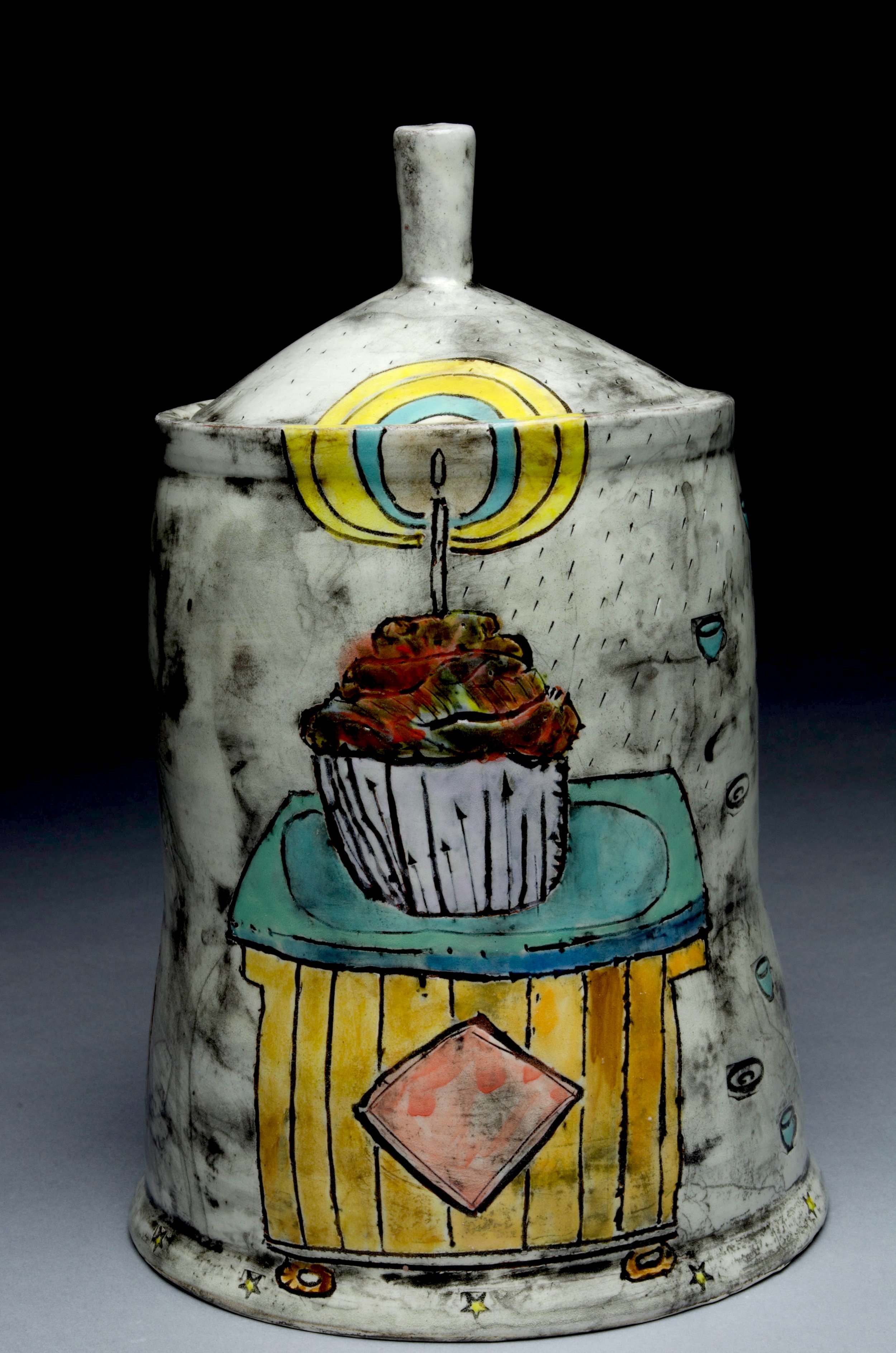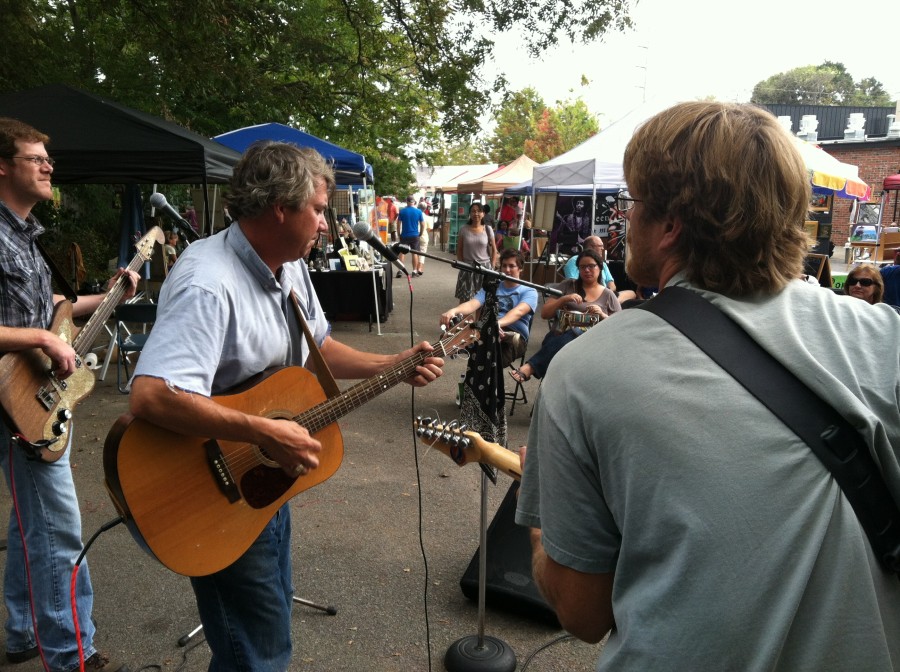 By: Alex Smith
By: Alex Smith
Trustus Theatre has made something of a one-show franchise out of Richard O’Brien’s 1973 musical THE ROCKY HORROR SHOW. Their current production of the show (the sixth in 24 years) is yet another fine production of a musical whose tightrope walk between cult status (the film adaptation, THE ROCKY HORROR PICTURE SHOW, has run in midnight showings at movie houses around the world since its release in 1975) and mainstream standing (countless tours, two Broadway runs, a brand new television film premiering at the end of this month) mirrors the fine line it also walks between over-the-top, drag/camp musical comedy, and something much more thoughtful, substantive, and, ultimately, timeless.
Pilfering tropes from the best and worst of A-, B- and Z- sci-fi and horror movies and mixing them into the melting pot of a gender-bending, sexually promiscuous and experimental London of 1973, still fully in the thrall of David Bowie’s bisexual starman Ziggy Stardust (who Bowie would officially “kill” onstage just over two weeks after ROCKY’s premiere at the Royal Court Upstairs theatre), O’Brien tells the story of a hapless, hopelessly square couple of “asshole” Brad Majors and “slut” Janet Weiss.
A wedding, a proposal, a stormy night, a flat tire, and the light from a castle(?!?) they passed a few miles back, and suddenly, the recently betrothed graduates of Denton High find themselves plunged into a world of incestuous servants, tap-dancing lackeys, muscle-bound monsters, and otherwise unbound and unhinged partakers of the “absolute pleasure” which the “man” of the castle, Dr. Frank N. Furter, entreats the virginal lovers to give themselves over to. Being the good, red-blooded, all-American kids that they are, it only takes a nudge from Frank, a healthy dose of lipstick and eyeliner, some fishnets, stiletto heels, and “just a little bit of stee=hee-hee-hee-mmmmm…”, before Brad and Janet find themselves cavorting with the Doctor and his whole odd, unearthly(?!?) crew in the most intimate of manners.
Reanimation! Betrayal! Murder! Infidelity! Necrophilia! Heartbreak! Aliens! O’Brien throws in everything up to and including the kitchen sink, and ends the whole shebang (like any good sci-fi/horror romp, especially ones from the Cold War-era) with a “moral”: our hero and heroine, searching for each other in the dark, smoky air where the castle once stood, finding each other but lost to themselves, it would seem, because of their transgressions…but in the final analysis (did I mention there’s a narrator commenting upon and guiding us through this brilliant madness?), we are told, these kids are actually just foolish for being so hung up over such frivolity as sexual freedom and exploration because, you know, when you think about how minuscule we are on this tiny floating blue rock, does any of it really matter?
On its own, this odd, convoluted story would flounder, however fabulously, just as the stories in many B- science fiction and horror or exploitation films often did. But playwright O’Brien dipped into not only the pulpy murk of bad double features for inspiration, he also trolled the American rock and roll and R&B airwaves of the 1950s and 1960s, eventually mixing in a little fanfare and elegance via Hollywood studios themes, and came out with that rarest of gems in the deep mine of theatrical musicals: a set of songs that could each stand completely on their own as fine individual examples of the genre to which they belong, while at the same time providing a cohesive musical whole which leads us full circle from the opening number, “Science Fiction, Double Feature,” to its show-closing counterpart “Science Ficton (Reprise)”.
A further achievement of the songs (true musical classics: “The Time Warp,” “Sweet Transvestite,” “Hot Patootie, Bless My Soul,” “Toucha Touch Me,” “I’m Going Home”… if, for some reason, you don’t already know these songs, go see the show: you’ll never forget them once you have) is that, lyrically, O’Brien makes each one as integral a part of the overall story being told on stage as the dialogue and action - there is no filler here whatsoever - a far cry from what many musicals can claim.
The final triumph of O’Briens songs is that, in a musical theatre which, at the point ROCKY was being created, had hardly strayed from its classical cliches and methodology, he created a bunch of songs that sound and feel like they could be taken out of the context of the show and performed, one or all, anytime, at any place by a bunch of musicians with electric instruments, and they would sound just as good…in short, great songs that actually rocked.
That’s no mean feat in musical theatre, where, often, everything is necessarily softened, watered down, caricatured, or otherwise compromised in such a manner as to make it palatable and easily disseminated by the audience. This works terrifically when you’re, say, telling the story of an impressionist painter, or a gang of singing cats, or bohemians in New York in the early nineties. Rock & roll is not soft, however, and so it always seemed out of place or as though it were being turned into Muzak (with rare exceptions) when it played any part in musical theatre up to ROCKY HORROR. Just as O’Brien made a terrific set of individual songs that could stand on their own, he also proved that there was a place for harder edged music in musical theatre, that rock & roll could sustain a whole show. With ROCKY, he effectively created the Rock Musical.
THE ROCKY HORROR show changed so much about the musical theatre (and eventually the movies and the world). It un- self-consciously tipped its hat to all of its influences while simultaneously sending them up and utilizing them as the glue that held the pieces in place. Put together, O’Brien’s clever book and brilliant songs, his unforgettable characters and that never-ending sense of wonder over the idols it was at once holding up and smashing (which is nothing so much as a parallel for the pubescent feeling of liberation and awe upon one’s discovery of those old friends sex, drugs and rock & roll) melded perfectly to create what has become one of the great musicals of all time.
Trustus Theatre’s 24-year hold on the ROCKY HORROR brand continues, starting this Saturday 8pm (after a slight delay for Hurricane Matthew), and the production, from front to back, could not have been placed in better hands.
Scott Blanks, an actor of the highest calibre, stood tall, over the course of almost twenty years, in the stack-heeled shoes of ROCKY’s antagonist and bustier-bedecked master of ceremonies, Dr. Frank N. Furter. Blanks played the role in no less than five separate productions over two decades (full disclosure: this reviewer portrayed the doomed “delivery boy” Eddie in the third production of ROCKY at Trustus and has fond memories of being chased every night to his offstage “doom” by a pick-axe wielding, rubber gloves wearing, surgeon’s gown draped dervish in the form of Blanks-as-Frank from December, 1999 to January 2000). His spot-on portrayal of the fetching, gender-fluid “Doctor” cast a long shadow over any hopes of a subsequent revival of ROCKY at Trustus when he announced that with the theatre’s fifth production in 2009 that he would be hanging up his fishnets for good, and that he would not portray Frank again.
So what better choice of a director to oversee the proceedings in Trustus’s ROCKY #6, could there have been than the man who stood, onstage, at the center of each previous production, Scott Blanks? Having seen the latest incarnation of the show, one would be hard-pressed to make a better selection. Blanks’ direction of the show is lean and tight, and each act flashes by swiftly in a trail of glitter and pheromones. Blanks’ solid choices with regard to staging, along with Caitlin Britt’s elegant, energetic choreography, make the action of the play, which gallops apace from start to finish, convey far more nuance than a show which runs as fast might lead one to expect.
Brandon McIver’s set and Barry Sparks’s lighting design are of the usual excellence which Columbia theatergoers have come to expect from these two veterans. Baxter Engle’s projections add the perfect amount of texture to the entire stage picture when and wherever they are utilized, especially in the opening and closing use of rainfall. From a technical angle, the stand-out part of the evening is the sound. The show’s excellent band, lead ably by Musical Director Chris Cockerel, could be heard loud and clear, each instrument coming through the system without any distortion, and none of it interfering whatsoever with the actors voices coming from the stage. Trustus has always been problematic when it comes to amplified sound, so to hear everything so clearly was an absolute revelation.
Costumes by Clay Owens and props by Nathan Herring are appropriately campy and kitsch, respectively, and the wigs were an unexpectedly tacky delight. But, “I see you shiver with antici…pation.” So let’s get to the heart of things.
Blanks has assembled a remarkably young performance ensemble for the sixth incarnation of THE ROCKY HORROR SHOW at Trustus, whose collective youth is only matched and exceeded by its talent. This is an excellent cast.
The always outstanding Katie Leitner starts the show out in the guise of the oft-forgotten “Usherette,” and returns in short order as the servant Magenta, who she plays with eerie, unblinking and hilarious “bride of Frankenstein” look frozen on her face. We also meet the “Phantoms” or Transylvanians as they are sometimes called, the “background” players who seem to constantly be everywhere at all times, as dancers, singers, windshield wipers, party guests, and just about any other thing the show requires. They are excellent here, turning the stage from flats and platforms into something more akin to a living, breathing organism, and their collective work is so good that they deserve to be pointed out individually: Allison Allgood, Sara Blanks, LaTrell Brennan, Brittany Hammock, Parker Byun, Jackie Rowe, Abigail McNeely, Mario McClean, Blair Baudelaire, and Matt Wright.
Possibly the youngest member of this young cast, Gerald Floyd plays the no-named, no-necked Narrator with the poise, dignity and sophistication of a much older gentleman, even when doing the pelvic thrust. Cody Lovell and Anna Lyles are hilarious as, respectively, everybody’s favorite asshole and slut, Brad Majors and his fiancée Janet Weiss. It’s especially fun to watch these two transform from the sweet kids from Denton High at the beginning to the insatiable beasts of excess they become by the end of the show. Michael Hazin is great as the “butler with a secret” Riff Raff, playing him with a barely perceptible half grin and hunchbacked swagger.
Kayla Cahill is fabulous as tap-dancing groupie Columbia, her portrayal significantly less ditzy and squeaky than most, which is a breath of fresh air. Josh Kern is more than sufficiently well-suited to play the titular “creation” Rocky, and Percy Saint Cyprian is terrific as Eddie, ex-delivery boy and organ donor. And GREAT SCOTT! I swear I recognized that (uncredited and unlisted in the program) actor playing Eddie’s uncle, Dr. Everett Scott, from somewhere…something about a pig and a spider, maybe? Anyway, whoever he was, he was, and is, always fantastic.
Have I forgotten anyone? Ah! The “man” himself, Dr. Frank N. Furter, played with fearless bravado and boundless talent by Walter Graham, who clearly benefitted from the tutelage and direction of one who knew the character inside and out, but who also brings such a fundamentally different take on the “sweet transvestite” to this production that he does what any actor playing this legendary role must do: make it their own. Graham meets and exceeds this task (“In abundance!”), gliding through his performance as though he’d been preparing his whole life for it. To point out any one moment in his performance as Frank is unfair to the strength of the whole (harharhar), but, in all seriousness, if Graham’s emotional, soulful, show-stopping delivery of ROCKY’s most gentle, beautiful number, “I’m Going Home,” doesn’t bring tears to your eyes, then you simply must not have eyes. Or a heart. Where’s Eddie? He might have one for you…
Blanks, Cockrell, Britt, and the whole cast and crew have done Trustus Theatre proud with this sixth incarnation of THE ROCKY HORROR SHOW, bringing such a wealth of talent and energy to the production that, like Brad Majors, you would have to be an asshole to miss it. So, put on your fishnets, slather on mascara and lipstick, make sure to pack a spare tire if it’s a rainy night, and get ready to swim the warm waters of sins of the flesh: there’s a light over at the Frankenstein place, and it’s the glow coming from this production of THE ROCKY HORROR SHOW at Trustus Theatre, which absolutely sparkles!
THE ROCKY HORROR SHOW
Book, music and lyrics by Richard O'Brien
Directed by Scott Blanks
Musical Direction by Chris Cockrell
Choreography by Caitlin Britt
Runs Saturday, October 8 through Saturday November 5
trustus.org/






